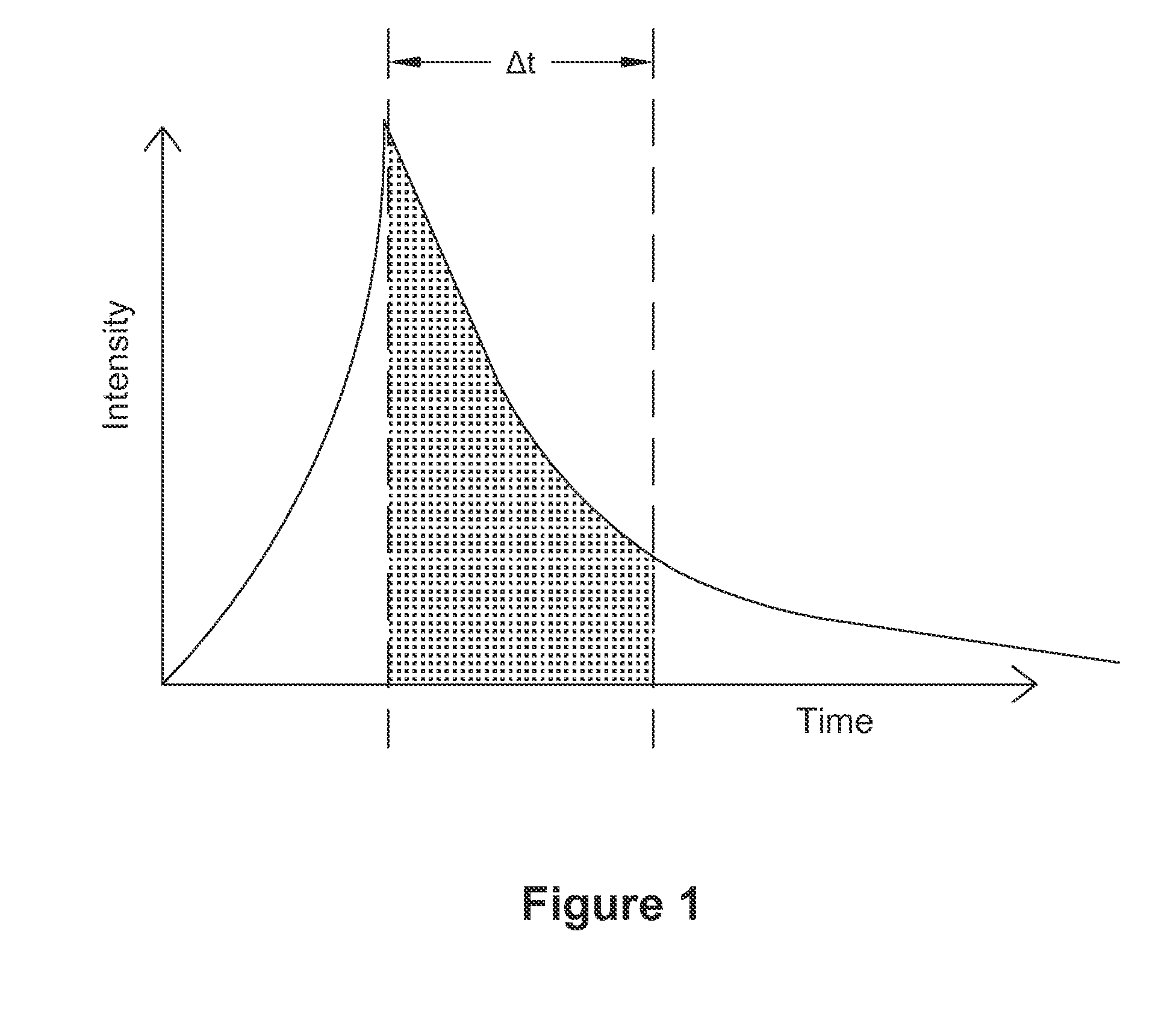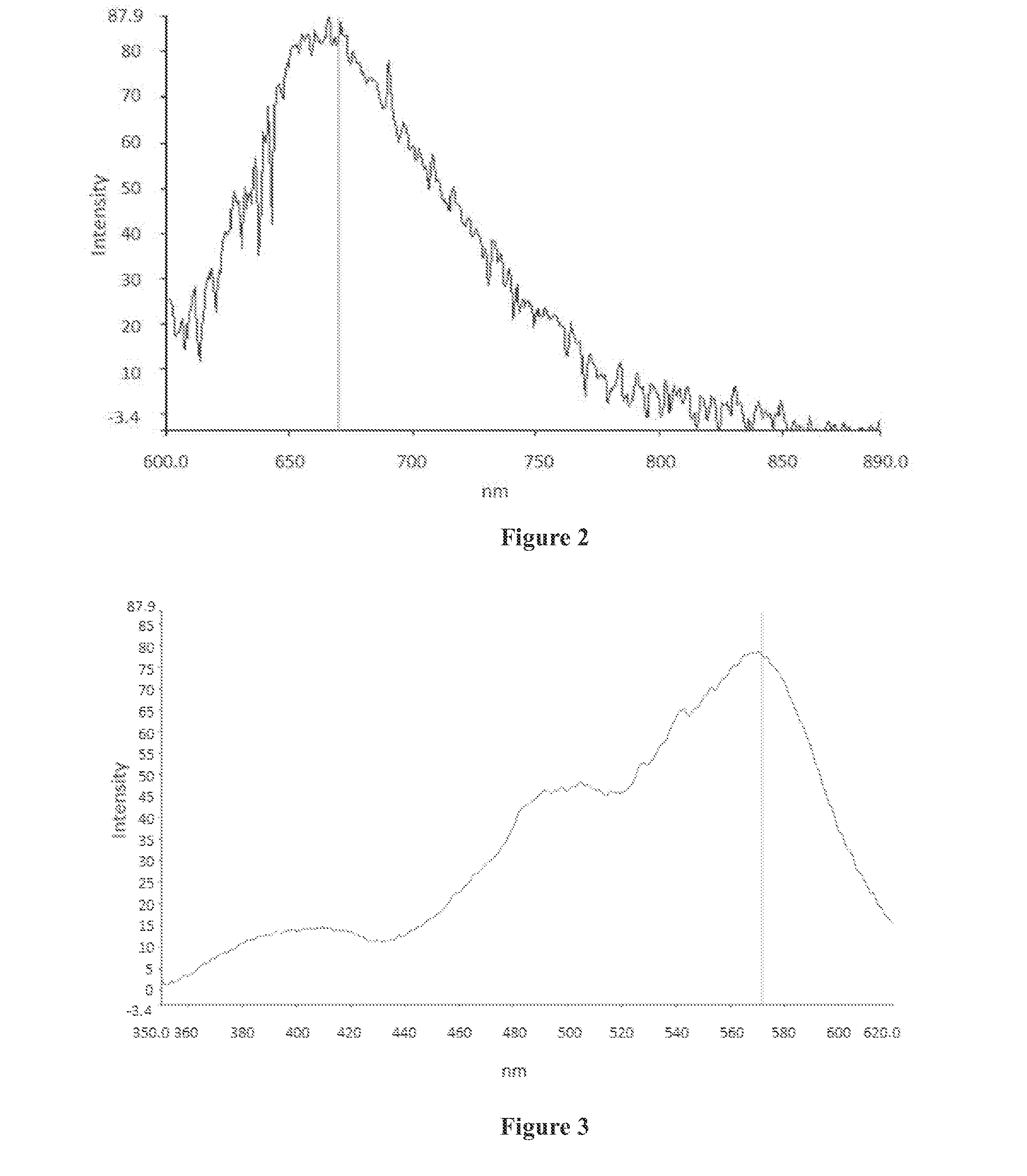Method of measuring luminescence of a material
a luminescence and material technology, applied in the direction of luminescent dosimeters, optical radiation measurement, instruments, etc., can solve the problems of high signal-to-noise ratio (snr), and the lif polyethylene dosimeter (circa the late 2000s) still cannot measure much less than a few gy, so as to achieve the effect of altering the properties of the luminescent material
- Summary
- Abstract
- Description
- Claims
- Application Information
AI Technical Summary
Benefits of technology
Problems solved by technology
Method used
Image
Examples
Embodiment Construction
[0028]The present invention is directed to methods of measuring luminescence of a material, methods of reducing background fluorescence of a material, and methods of altering properties of a luminescent material.
[0029]In one embodiment, a method of achieving higher signal-to-noise ratio (SNR) in a composite material dosimeter is disclosed. The method includes time-gating the OSL or RPL response emission and rejecting the unwanted background fluorescence irrespective of its source. This emission process is optimally stimulated through the use of a fast laser pulse, LED or a flash lamp—fast being less than the time-constant of the OSL (or RPL) emission process being targeted—applied to an exposed material. The emission signal of the exposed material is then amplified and measured at a fixed time window or interval on the order of a half-life of the decay constant of the material. This process can be repeated for hundreds to thousands of pulses or more. Since ultra-fast pulsed lasers, ...
PUM
 Login to View More
Login to View More Abstract
Description
Claims
Application Information
 Login to View More
Login to View More - R&D
- Intellectual Property
- Life Sciences
- Materials
- Tech Scout
- Unparalleled Data Quality
- Higher Quality Content
- 60% Fewer Hallucinations
Browse by: Latest US Patents, China's latest patents, Technical Efficacy Thesaurus, Application Domain, Technology Topic, Popular Technical Reports.
© 2025 PatSnap. All rights reserved.Legal|Privacy policy|Modern Slavery Act Transparency Statement|Sitemap|About US| Contact US: help@patsnap.com



